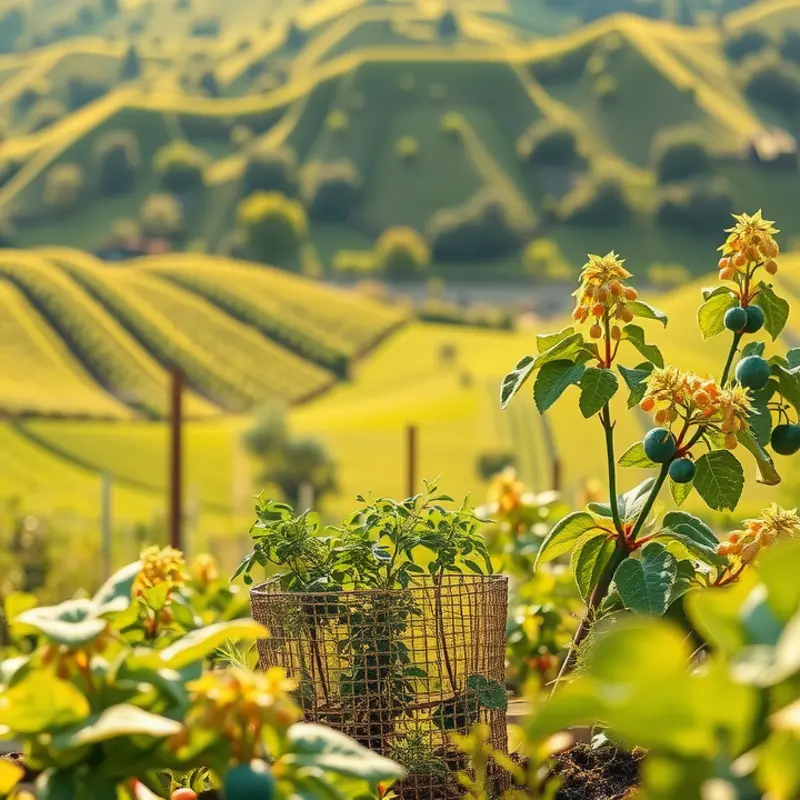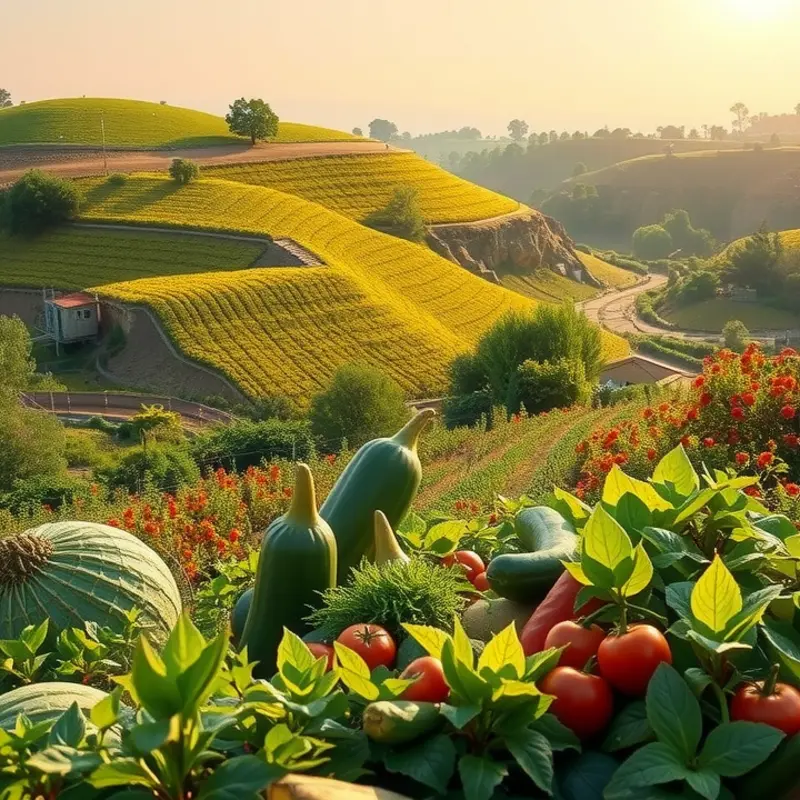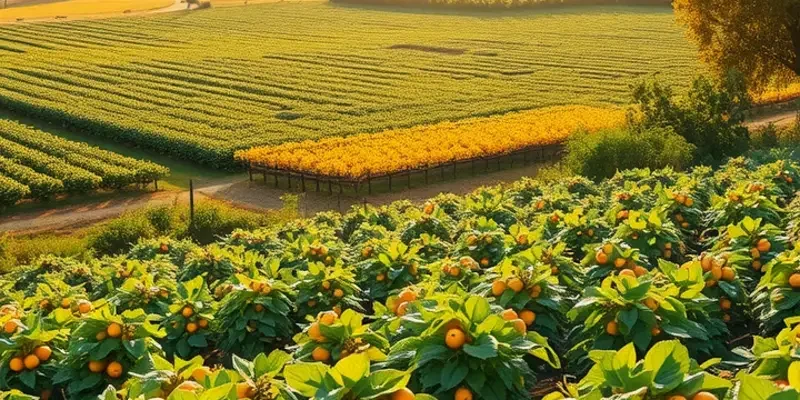Discover the art of low-impact cooking, where every meal contributes to a healthier planet. By making thoughtful food choices, you can significantly reduce your ecological footprint while nourishing yourself and your loved ones. This comprehensive guide focuses on practical strategies and insights designed to empower anyone keen on adopting sustainable culinary practices. Whether you are a seasoned chef or a beginner in the kitchen, the principles of low-impact cooking can be seamlessly integrated into your daily life.
Embracing Seasonal and Local Ingredients

Using seasonal and locally-sourced ingredients is a vital component of sustainable cooking. This practice minimizes transportation emissions and fosters a more robust local economy. Buying locally means your vegetables and fruits travel shorter distances from farm to table, reducing carbon footprints and ensuring freshness.
Identifying seasonal produce can be as simple as a quick online search or referencing a local seasonal produce guide. Most regions have distinct growing seasons, and familiarizing yourself with these can significantly enhance your culinary experience. Seasonal ingredients are often more flavorful, as they’re harvested at their peak ripeness. Additionally, embracing seasonal produce encourages a varied diet, introducing diverse nutrients throughout the year.
Locally-sourced ingredients offer several economic and environmental benefits. They support local farmers and producers, circulating money within the community. This not only helps small businesses thrive but also reduces dependence on larger supply chains, which often have a higher environmental toll.
Farmers’ markets are ideal for sourcing local, seasonal produce. They offer direct interactions with farmers, allowing you to ask questions about farming practices and get to know the individuals behind your food. Developing a relationship with local producers can lead to insights about new or unusual ingredients, expanding your cooking repertoire. Arriving early often gives you access to the freshest picks, while visiting near closing can garner deals on larger quantities of produce.
Learning how to engage with local producers can further your sustainable cooking journey. Start by asking questions about the farming practices they employ. Are their methods organic or sustainable? Do they use crop rotation to maintain soil health? Understanding these practices can offer assurance of the quality and environmental impact of your food.
Consider participating in Community Supported Agriculture (CSA) programs. CSAs involve purchasing a share of a farm’s produce in advance, providing farmers with financial security and yourself with a regular supply of fresh produce. This model reduces waste, as farmers allocate resources based on committed shares, and you receive a curated selection of what’s truly in season.
For practical tips on making the most of seasonal abundance, consider preserving techniques like canning or freezing. These methods allow seasonal produce to be enjoyed year-round, reducing reliance on out-of-season shipments. Additionally, preserving can reduce food waste, tying into a broader sustainable cooking strategy. You can find more tips on reducing waste and storing produce effectively here.
By embracing seasonal and local ingredients, you can enjoy vibrant flavors while aligning your culinary practices with sustainable principles. This approach enriches your meals and contributes positively to your local community and the planet.
Reducing Food Waste in the Kitchen

Food waste is a pressing issue, with each discarded scrap contributing to a larger environmental impact. By adopting thoughtful strategies in meal preparation and cooking, you can proactively reduce this waste and promote a greener kitchen.
Effective meal planning stands as the first line of defense against wasting food. Before shopping, assess the ingredients you already have and plan meals around them. By creating a weekly menu that utilizes existing pantry items, you minimize the risk of buying unnecessary ingredients. Batch cooking is another efficient method, allowing you to prepare larger quantities of a dish, reducing time and energy spent on cooking each day. Explore practical ingredient batching to further enhance efficiency.
Next, mastering proper storage techniques increases the lifespan of your ingredients. Refrigerate perishables promptly and learn which items benefit from the freezer. Vegetables like carrots and celery last longer when stored in water, while herbs can maintain freshness longer when wrapped in a damp cloth. Invest in quality airtight containers, which are invaluable for preserving leftovers and keeping produce crisp.
To further reduce waste, embrace creative utilization of leftovers. Reinvent cooked grains or veggies into new dishes, such as stir-fries or frittatas. Leftover roasted chicken might serve as a filling for tacos or sandwiches the next day. The beauty of leftovers lies in their versatility, offering opportunities to experiment and create.
Repurposing vegetable scraps can yield a remarkable impact on waste reduction. Ornament your meals with stalks, peels, and leaves, transforming them into stocks or broths packed with flavor. Additionally, consider regenerating certain vegetables from scraps; green onions and lettuce can regrow in water, granting you a renewable source of greens.
Lastly, it’s essential to embrace imperfections in produce. Aesthetic quirks do not detract from flavor or nutrition, so avoid discarding items deemed “ugly” by conventional standards. In fact, juicing or adding these to soups and stews can seamlessly incorporate them into your meals.
Adopting these practices empowers you to make more sustainable choices in the kitchen. By minimizing food waste, you contribute to a larger effort to reduce environmental degradation, proving that small actions can drive significant change.
Final words
The journey toward low-impact cooking is both fulfilling and essential for fostering a sustainable future. By embracing seasonal and local ingredients, you not only enjoy fresher, tastier meals but also reduce the carbon emissions associated with food transportation. Additionally, reducing food waste challenges us to be creative and resourceful in the kitchen, ultimately leading to more mindful consumption habits. As individuals unite in adopting these practices, we collectively strengthen our communities and protect the environment for future generations. Even small changes can make a significant impact, encouraging everyone to reflect on their food choices and align them with a more eco-friendly lifestyle.








